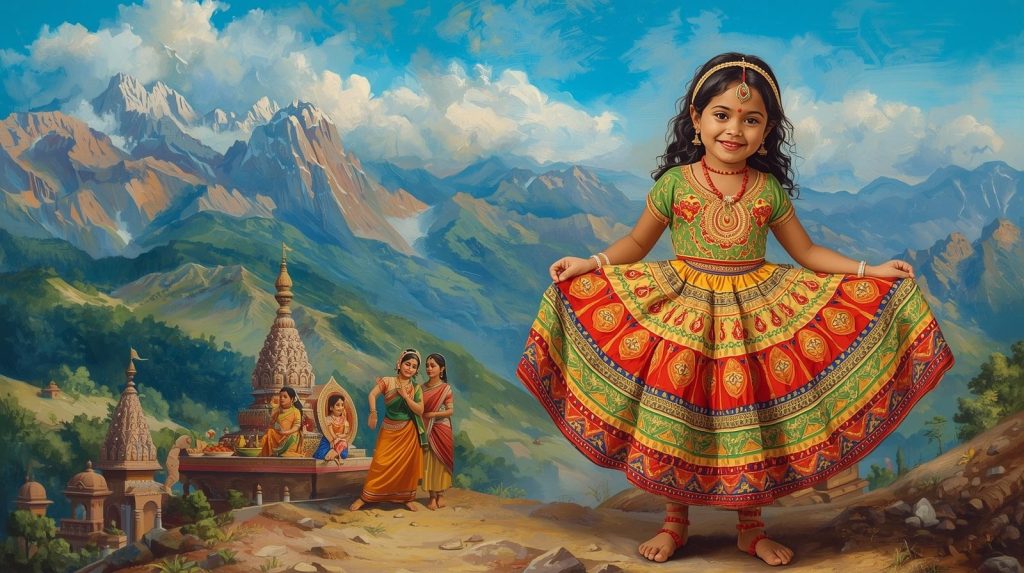
Mountains of Holige and One New Dress: Remembering the Ugadi of Our Childhood
As the scent of mango leaves and fresh jasmine fills the air, my mind travels back in time. Today, Ugadi arrives with a notification on our calendars, a quick trip to the mall, and maybe a food order from a favourite sweet shop. But for those of us who grew up in the 1980s and 90s, the arrival of the new year was a slow, beautiful, and deeply sensory experience, steeped in anticipation and tradition.
At the heart of this anticipation was one golden, ghee-laden delight: the Holige (or Obbattu).
The Great Holige Marathon
The Ugadi festival didn’t just begin on the day itself; it announced its arrival the day before, in the kitchen. This was the day of the great Holige marathon. I remember our home transforming into a bustling workshop of flavour and fragrance. The air would be thick with the sweet, earthy aroma of simmering lentils (bele) and melting jaggery (bella).
This wasn’t about making a few sweets for the family. It was a monumental undertaking. My mother, aunts, and grandmother would sit on the floor, a symphony of coordinated movements, rolling, stuffing, and roasting for hours on end. The result was a veritable mountain of Holige. I can still picture the sight of two or three large makari (basins) piled high with these perfect, golden-brown discs. For a child, it was a treasure trove, a promise of the feast to come. The temptation to sneak one hot off the griddle was immense, a delicious secret shared with a knowing smile from an elder. This day of collective effort wasn’t a chore; it was a ritual of love, weaving the family together before the festivities began.
The Dawn of a New Year: Oil Baths and New Beginnings
The morning of Ugadi would begin before sunrise with the ceremonial oil bath, the yenne snana. This wasn’t a quick shower. It was a deliberate, cleansing ritual. The warmth of the scented oil being applied from head to toe was believed to purify the body and soul, washing away the old and preparing us for the new year ahead.
And then came the moment that, for many of us, was the absolute pinnacle of the year: receiving our new clothes. In an era without online shopping and frequent sales, new clothes were a rare and precious commodity. For most, Ugadi was the only day in the entire year we were gifted a brand-new outfit. We would handle the crisp fabric with a sense of wonder, our hearts bursting with a simple, profound joy. Wearing that new dress or shirt made us feel special, renewed, and ready to welcome everything the new year had to offer.
A Changed Celebration
Today, the world spins much faster. The very concept of waiting has changed. Holige is readily available in sweet shops, perfectly packed and just a click away. The need for a day-long family effort in the kitchen has faded into a nostalgic memory. New clothes are no longer a once-a-year luxury; they are bought for birthdays, other festivals, or sometimes for no reason at all.
While we have gained immense convenience, one has to wonder what we’ve traded in return. We’ve traded the day-long family bonding in the kitchen for a few minutes at a shop counter. We’ve traded the year-long, breathless anticipation for a single new dress for the instant gratification of a full wardrobe.
The spirit of Ugadi—of welcoming the new year by acknowledging life’s mixture of sweetness and bitterness (Bevu-Bella)—endures. But the texture of the celebration has changed. The memories from the 80s and 90s are not just about the food or the clothes; they are about the invaluable joy of anticipation, the beauty of patient waiting, and the deep, comforting warmth of family traditions that made the festival truly unforgettable.


